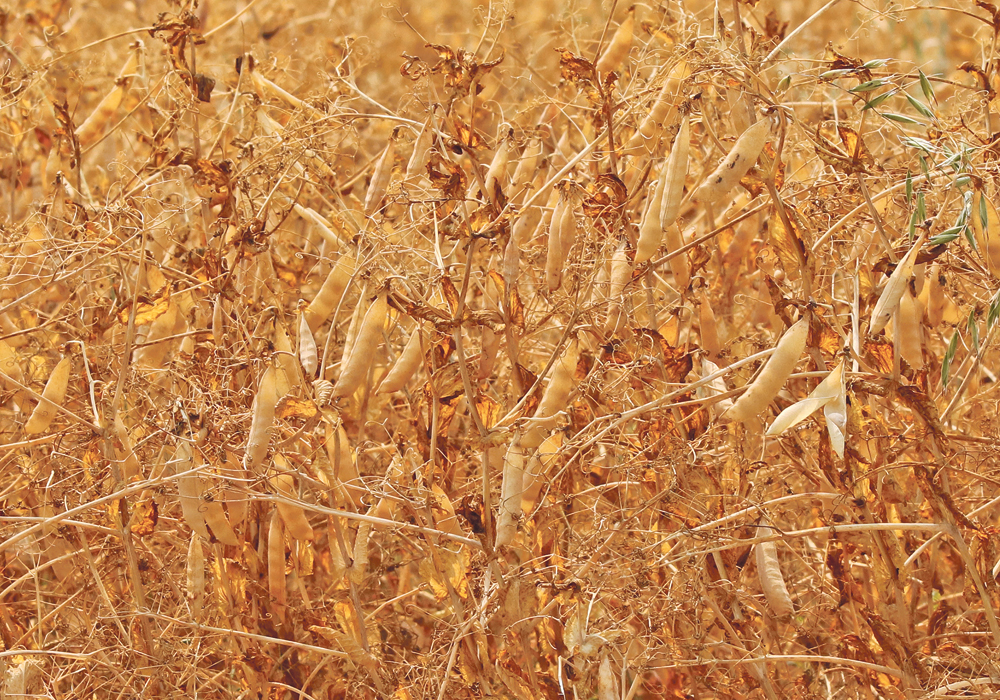There are no signs that peas will be the next Canadian agricultural commodity banned by China, says the chief executive officer of Pulse Canada.
“We’re continuing to ship product to China and that’s good news for everybody from farmers to companies to food manufacturers in China who are reliant on Canadian peas,” said Gord Bacon.
Some shipments are taking longer to clear customs as they are subjected to increased scrutiny, but that has been the case for months.
China remains Canada’s top pea customer by a long shot, but what is clear is that China is actively looking for alternative suppliers of the crop.
Read Also

Critical growing season is ahead for soybeans
What the weather turns out to be in the United States is going to have a significant impact on Canadian producers’ prices
Pulse organizations from China and Ukraine signed a memorandum of understanding at the recently held Global Pulse Confederation convention in Rio de Janeiro, Brazil.
The Community of Pulse Producers and Customers of Ukraine and the China Chamber of Commerce of Import & Export of Foodstuffs agreed to work on getting phytosanitary approvals in place allowing China to import peas from the Black Sea region.
“The priority area will be making the Chinese market open to Ukrainian peas. Their deliveries are expected to be set up by the end of this year,” said a story on UkrAgroConsult’s website.
Bacon said Canada supplies more than 90 percent of the yellow peas imported by China.
“It looks like there’s the possibility of some more competition,” he said.
Marlene Boersch, managing partner with Mercantile Consulting Venture, isn’t overly concerned about Ukrainian peas immediately displacing imported Canadian peas in China.
“From a pure, logical transportation point of view we’re very well situated. It’s hard to compete with us to China,” said Boersch.
Ukrainian peas would have to take a circuitous route through the Black Sea, the Mediterranean Sea, the Red Sea and then the Indian Ocean to get to China.
“We have relatively cheap freight rates, so I think we would be OK in a perfect world,” she said.
“But if you throw some political considerations in there, that is not a perfect world. That is what I’m worried about more than anything else.”
Ukraine has consistently produced 750,000 to one million tonnes of peas annually over the past four years, according to Stat Publishing.
Exports have ranged from 350,000 to 500,000 tonnes over that same stretch. It mainly ships product to the European Union, Turkey and the Indian subcontinent, markets where it has a freight advantage over Canada.
That is why Boersch isn’t too worried about Canada losing its stranglehold in China in the short-term.
However, Ukraine’s high-speed rail lines association has proposed a new China-Ukraine-EU railway project that would be part of China’s One Belt, One Road mega-project.
It would involve the construction of 1,100 kilometres of high-speed rail line in Ukraine, according to a story on the UNIAN Information Agency website.
Stephen Kubiv, Ukraine’s minister of economic development and trade, led a Ukrainian delegation at the Second International Belt and Road Forum in late April.
He said the best way to connect China with the EU is to create transportation corridors through Ukraine.
“We offer our Chinese colleagues a joint project portfolio: development of port infrastructure, alternative energy facilities, construction of highways and bridges, development of railway and airport facilities, high technologies, co-operation in the aerospace sector and processing of agricultural products,” Kubiv said in a government news release.
He said Chinese and Ukrainian specialists have held consultations on the construction of the Trans-Caspian International Transport Route.
“Ukraine is ready to offer cost-effective transportation routes on the territory of Ukraine to connect China with the countries of Europe,” said Kubiv.
That is the kind of development that is concerning to Boersch in the long-term because it has the potential to make Ukrainian wheat, rapeseed and pulses far more economical in China.
“I’m very worried about this whole change in who trades with whom, this whole change of the trading mosaic,” she said.


















